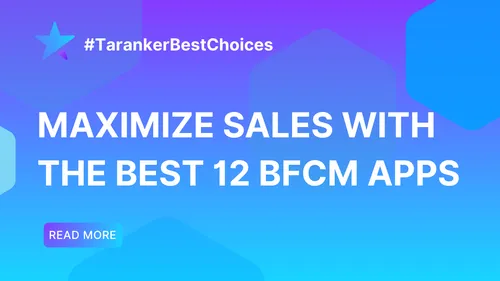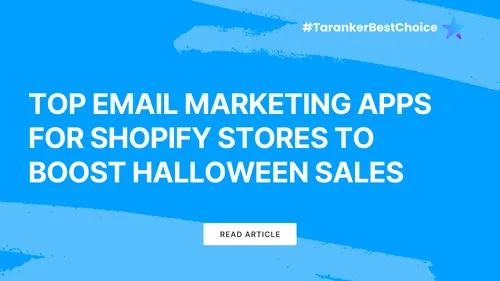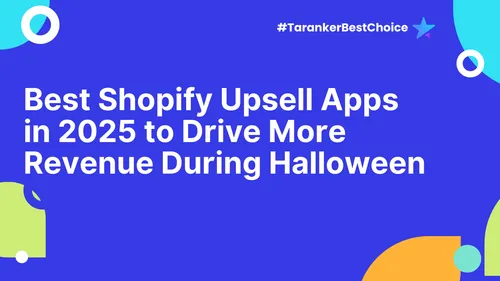In the world of digital marketing, Search Engine Optimization (SEO) plays a crucial role in ensuring that your website ranks high in search engine results pages (SERPs). While SEO strategies encompass a variety of techniques—from keyword optimization to backlinking—blogging and content marketing have emerged as pivotal elements that significantly impact your site's SEO performance. With over years of experience in the field, it’s evident that when executed strategically, content marketing not only enhances a brand’s online presence but also strengthens its SEO efforts. In this blog post, we’ll explore the power of blogging and content marketing and how they are integral to achieving long-term SEO success.
What is SEO?
.png)
Search Engine Optimization (SEO) is the practice of improving your website’s visibility on search engines like Google. By optimizing your content and website structure, you increase the chances of ranking higher in search engine results pages (SERPs). This involves various strategies, such as optimizing keywords, improving website speed, building backlinks, and ensuring high-quality content.
Current SEO Trends
-
EEAT (Expertise, Authoritativeness, Trustworthiness): Google is now emphasizing the importance of content that demonstrates expertise, authority, and trustworthiness. Content that meets these criteria is more likely to rank higher.
Learn more about Google EEAT here
-
Zero-Click Searches: These are search results that provide users with answers directly on the search engine results page, such as featured snippets or knowledge panels. To leverage this, content needs to be structured in a way that it can appear in these prime positions.
-
Mobile-First Indexing: With the majority of internet users browsing on mobile devices, Google now primarily uses the mobile version of a website for ranking. Ensuring your website is mobile-friendly is critical for SEO success.
The Relationship Between Blogging and SEO
Blogging and SEO are deeply interconnected. Blogging serves as a platform to publish fresh, valuable content consistently, which is a key factor that search engines like Google prioritize. Here are the ways blogging influences SEO:
-
Fresh Content Increases Search Engine Crawling: Search engines love new, relevant content. By maintaining a regular blogging schedule, you provide search engines with fresh content to crawl, index, and rank. This can significantly enhance your visibility in search results.
-
Long-Form Content Improves Keyword Ranking: Blog posts that are detailed and well-researched tend to rank higher because they cover a wide range of topics related to a specific keyword or theme. Long-form content provides a comprehensive answer to users' queries, which search engines recognize as more authoritative.
-
Internal Linking Structure: Blogging helps create an internal linking structure that not only improves user navigation but also allows search engines to index your site better. By linking related posts within your blog, you create a strong internal link profile that improves your website’s SEO.
-
Enhanced User Engagement: Blogs provide an opportunity to engage with your audience by responding to comments, sharing on social media, or even through interactive content like polls or videos. Engagement signals to search engines that your content is valuable, which can help improve rankings.
The Role of Content Marketing in SEO
Content marketing, which includes blogging, infographics, videos, and social media posts, plays an essential role in enhancing SEO performance. Here’s how content marketing helps improve your site’s search engine rankings:
-
Quality Content Drives Organic Traffic: Consistently publishing high-quality content increases the likelihood of people finding your website through organic search. When people search for solutions to their problems, quality content ensures that they land on your site.
-
Content Supports Link Building Efforts: Good content naturally attracts backlinks from other reputable sites. The more high-quality backlinks you accumulate, the stronger your SEO profile becomes. Additionally, your blog content can serve as a resource for other websites looking to link to authoritative sources.
-
SEO-Friendly Content Promotes Keyword Optimization: Successful content marketing strategies include the research and optimization of target keywords. Blogs give you the flexibility to optimize specific pages with keywords that are relevant to your audience, improving the likelihood of ranking for those terms.
-
Boosts Brand Awareness and Trust: When your blog or content is shared across social media platforms and other websites, it increases brand awareness and trust. People are more likely to click on links from a trusted source, and search engines reward sites that have high trust and engagement metrics.
Strategies for Effective Blogging and Content Marketing
.png)
To make the most of blogging and content marketing for SEO, you need to implement a strategic approach. Below are a few key strategies to follow:
1. Keyword Research and Optimization
Before writing a blog post, it’s crucial to conduct keyword research to identify terms your target audience is searching for. Use tools like Google Keyword Planner, Ahrefs, or SEMrush to discover the keywords that have high search volume and low competition. Once you identify your keywords, incorporate them naturally into your blog posts, titles, headers, and meta descriptions to optimize your content.
Avoid Spammy Keywords: While it's essential to use targeted keywords, avoid overusing or "stuffing" your content with keywords, as this can be seen as spammy by search engines. Keyword stuffing can negatively impact your SEO and provide a poor user experience. Focus on creating content that reads naturally and includes keywords in a way that flows organically.
This addition ensures that your content remains both SEO-friendly and valuable to readers by avoiding over-optimization.
2. Create High-Quality, Relevant Content
Search engines prioritize quality over quantity. While it’s important to publish consistently, the quality of your content is what will ultimately drive your SEO success. Your content should be comprehensive, informative, and directly address the needs of your audience. Aim for content that answers common questions, solves problems, and provides unique insights.
3. Optimize Your Blog’s Structure
Ensure that your blog posts are well-structured for both users and search engines. Use clear headings (H1, H2, H3) to break up your content into digestible sections. Implement proper on-page SEO practices, such as optimizing title tags, meta descriptions, and using alt text for images. This structure will not only improve readability but also make it easier for search engines to crawl and index your site.
4. Focus on Internal and External Linking
Internal linking is an effective way to guide search engines and users through your website. Every blog post should contain links to other relevant pages within your site, helping search engines discover new pages. Additionally, linking to external authoritative websites can improve the credibility of your content, showing search engines that your content is well-researched.
5. Consistency is Key
SEO success with blogging and content marketing doesn’t happen overnight. Consistency is crucial for long-term results. Develop a content calendar and stick to it. Whether you publish weekly, bi-weekly, or monthly, a consistent schedule shows search engines that your site is actively updated, which can positively impact rankings.
Measuring the Impact of Blogging and Content Marketing on SEO
To ensure your blogging and content marketing strategies are effective, you need to track your performance through SEO metrics. Here are some key metrics to monitor:
Organic Traffic
Use Google Analytics to track the amount of organic traffic you arereceiving. A consistent increase in traffic after publishing blog posts suggests that your content is successfully ranking in search results.
Evaluate Traffic Based on Content Type: It's important to understand that the traffic you receive will vary depending on the type of content you publish. For example, evergreen content, which remains relevant over time, is likely to attract a steady stream of returning visitors, while time-sensitive content (such as news articles or trending topics) may drive an influx of new users.
New vs. Retained Users: To better evaluate your traffic, distinguish between new and returning users. New users indicate that your content is attracting fresh visitors from search engines, while retained users reflect that your audience is coming back for more, which indicates that your content is valuable and engaging. By segmenting traffic this way, you can assess whether your content is effectively building long-term audience engagement.
Keyword Rankings
Monitor how your target keywords rank in SERPs. If your blog posts are optimized properly, you should see improvements in keyword rankings over time. It's important to track the rankings regularly to ensure that your content remains competitive. Keep in mind that rankings can fluctuate, so focus on long-term trends rather than short-term changes.
Keyword Intent and Relevance: Additionally, make sure the keywords you are targeting align with the search intent of your audience. Optimizing for high-intent keywords that match what users are searching for can help you achieve better rankings and drive more relevant traffic.
Backlinks
Track the number and quality of backlinks pointing to your blog posts. The more reputable sites that link back to your content, the stronger your SEO authority. Quality backlinks are a key ranking factor for search engines, as they signal to Google that your content is trustworthy and valuable.
Focus on Relevance and Authority: When building backlinks, prioritize links from authoritative websites in your niche. Links from high-quality sources are far more valuable than links from low-authority sites or unrelated industries. Aim for organic backlinks, such as those gained through guest blogging, content partnerships, or earning mentions on trusted platforms.
Engagement Metrics
Metrics such as bounce rate, average session duration, and social shares can provide insights into how engaging and relevant your content is to users. A high bounce rate could indicate that your content isn’t resonating with visitors, while longer session durations and social shares often signal that your content is valuable and engaging.
User Interaction: Pay attention to how users interact with your content. Metrics like comments, social shares, and time spent on page can help you assess content quality and engagement. Content that keeps visitors on your site for longer and encourages interaction is more likely to be favored by search engines.
Conclusion
Blogging and content marketing are powerful tools that, when used effectively, can significantly enhance your SEO efforts. By publishing high-quality, relevant content, optimizing for search engines, and fostering user engagement, your website can rise through the ranks of search engine results. The key lies in consistency, quality, and a strategic approach to keyword optimization, internal linking, and content promotion.
As you continue to implement these strategies, remember that SEO is a long-term game. It may take time to see results, but the combination of consistent blogging and content marketing will undoubtedly position your website for long-term SEO success.













